Sportscar Racing in the 50s and 60s
The immediate post war years saw a gradual return of motor racing and it wasn't too long before the big manufacturers were seeking to boost sales with competition successes.
The stories of the 1950s are bound up in Jaguar, Mercedes, Aston Martin and Ferrari.
Jaguar's C-Type proved the value of good aerodynamics and the, only recently demised, XJ engine, but the post war might of Mercedes soon swung into action and took victories in events like the Mille Miglia and the Tourist Trophy.
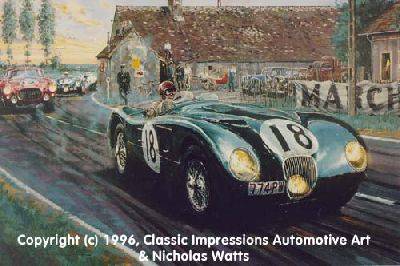
Nicholas Watts' excellent painting of a C-Type at Le Mans
Much of the 1950s sportscar history is dominated by the epic Le Mans battles between Jaguar's great D-Type and Mercedes' 300SLR. On the whole, the D-Type had the upper hand, but things were coming to a head nicely in 1955 when Pierre Levegh's Mercedes clipped a slower car coming onto the pit straight and speared into the crowd, killing driver and 80 spectators. This tragedy marked the end of Mercedes involvement in motor racing for many years.
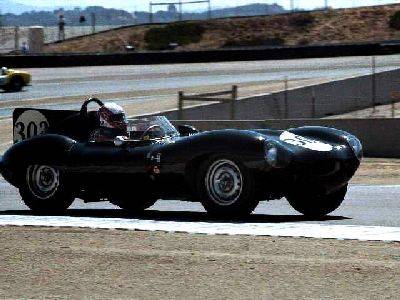
A D-Type in action in a historic race
The classic road races remained popular, but, as the technology improved, the cars outgrew roads and they ended in the 50s, after accidents became more catastrophic. The last Mille Miglia (proper) was run in1957 won by a Ferrari. However, probably the most famous Mille Miglia of all was Stirling Moss/Dennis Jenkinson's victory in a Mercedes 300SLR in 1955 at the startling average speed of over 98 mph.
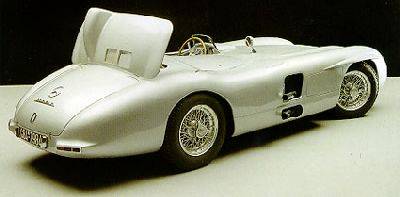
Mercedes 300SLR
Aston Martin were a force in sportscar racing, both pre-war (with cars like the Ulster) and post-war with the DB range. 1959 was their most glorious year, as their DBR3 took victory at Le Mans, the Tourist Trophy and the World Championship.
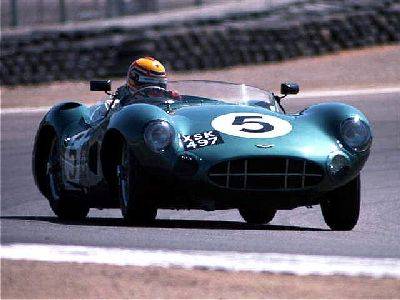
An Aston DBR1 in action in a historic event
Ferrari rose to competitiveness throughout the 50s and, as the 60s began, had become the dominant force in sportscar racing, partly due to the withdrawl of Mercedes and Jaguar.
The sixties began with Ferrari completing a 7 year domination of sportscar racing with their cars rising to the 4 litre TR (Testarossa) models, but the decade saw an increasing professionalism as the cars became more specialist.
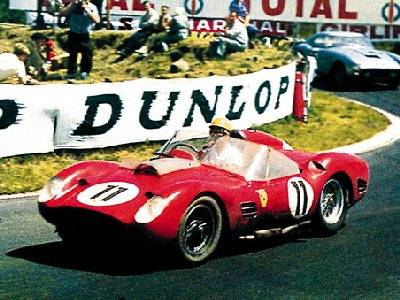
Ferrari 4 litre TR
The AC Cobra battled the Corvette Grand Sports and Ferraris in the GT stakes in the early - middle 60s, but soon the road cars were rendered obsolete by pseudo-GTs (proof positive that nothing is new under the sun).
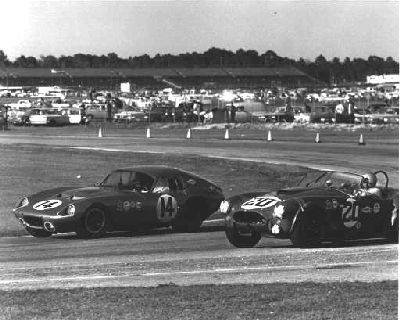
A Daytona Cobra passes a roadster
The middle '60s saw Ford of America swing a mighty sledgehammer, in the form of the (up to) 7 litre, Lola derived GT40s, probably the last sports racer which could really be used on the road, although it's unlikely that many of the teams turned up at Le Mans or Daytona, having driven their cars down from the factory.
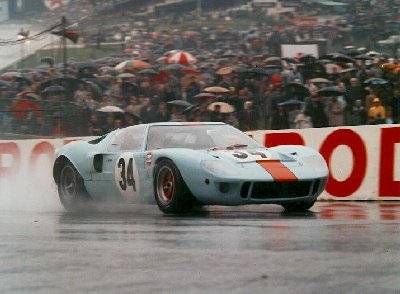
Ford GT40 in the rain
Ferrari dominated the early 60s, with cars like the 275LM, but Ford fought back after failing to buy Ferrari, with the GT40. The Lola T70 proved a mainstay of privateers and was used in the unsuccessful Aston V8 project.
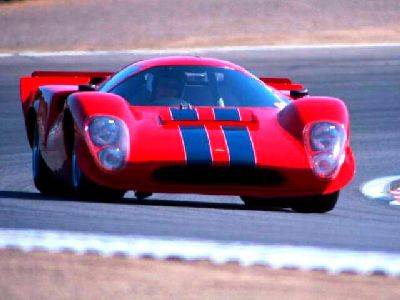
A Lola T70 in action in a recent historic event.
For a while in the later 60s, prototypes ruled with Ferrari battling against the highly developed Ford MkIVs, but the FIA decided to limit spiralling costs and performance with a regulation insisting on a number of cars being built for public sale.
Porsche were, probably, the first to see the loophole and unveiled the mighty 917. Supposedly a GT car (with a minimum build number of 25), the 917 had a flat 12 engine which gave enormous power (over 1000bhp was reputed when the car metamorphised into a turbo Can-Am spyder) mated to a flexible chassis which gave interesting handling, but dominant performance.
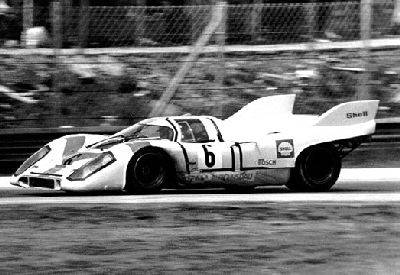
A Porsche 917 - photo courtesy Autosports Mktg Ltd
Against this, Ferrari stayed strong, once they'd recovered from the shock of the 917, but Ford withdrew from sportscar racing to concentrate on the highly successful F1 project with Cosworth.
Back To The Sportscar Racing Page
